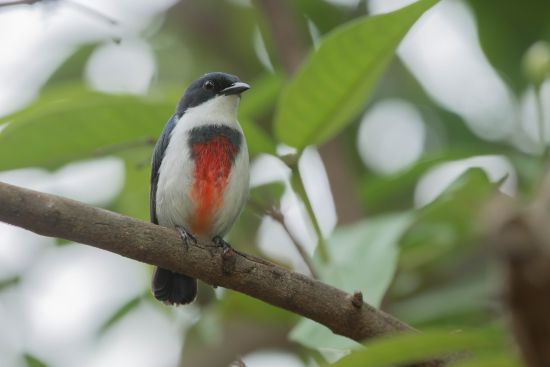| This article is incomplete. This article is missing one or more sections. You can help the BirdForum Opus by expanding it. |

Male
Photo © by Zosterornis latistriatus
Barangay Poblacion, Banga, Aklan, Panay, Philippines, 16 December 2022
Photo © by Zosterornis latistriatus
Barangay Poblacion, Banga, Aklan, Panay, Philippines, 16 December 2022
Alternative names: Visayan Flowerpecker; Red-keeled Flowerpecker (also used for Dicaeum australe)
- Dicaeum haematostictum
Identification
10 cm
- Black upperparts with bluey sheen
- White underparts, greyer on belly
- Black bar on upper breast with a bright scarlet patch extending from the bar and continuing as a line down the centre of breast and belly
- Longish, fine bill.
Distribution
South-east Asia: found in the Philippines (Panay and Negros); probably extinct on Guimaras
Taxonomy
This is a monotypic species[1].
Has been considered conspecific with Red-striped Flowerpecker.
Habitat
Forests, scrubby habitats and gardens, where it frequents fruiting or flowering trees.
Behaviour
References
- Clements, J. F., T. S. Schulenberg, M. J. Iliff, T. A. Fredericks, J. A. Gerbracht, D. Lepage, S. M. Billerman, B. L. Sullivan, and C. L. Wood. 2022. The eBird/Clements checklist of Birds of the World: v2022. Downloaded from https://www.birds.cornell.edu/clementschecklist/download/
- BirdLife International
Recommended Citation
- BirdForum Opus contributors. (2024) Black-belted Flowerpecker. In: BirdForum, the forum for wild birds and birding. Retrieved 25 April 2024 from https://www.birdforum.net/opus/Black-belted_Flowerpecker
External Links
GSearch checked for 2020 platform.1



